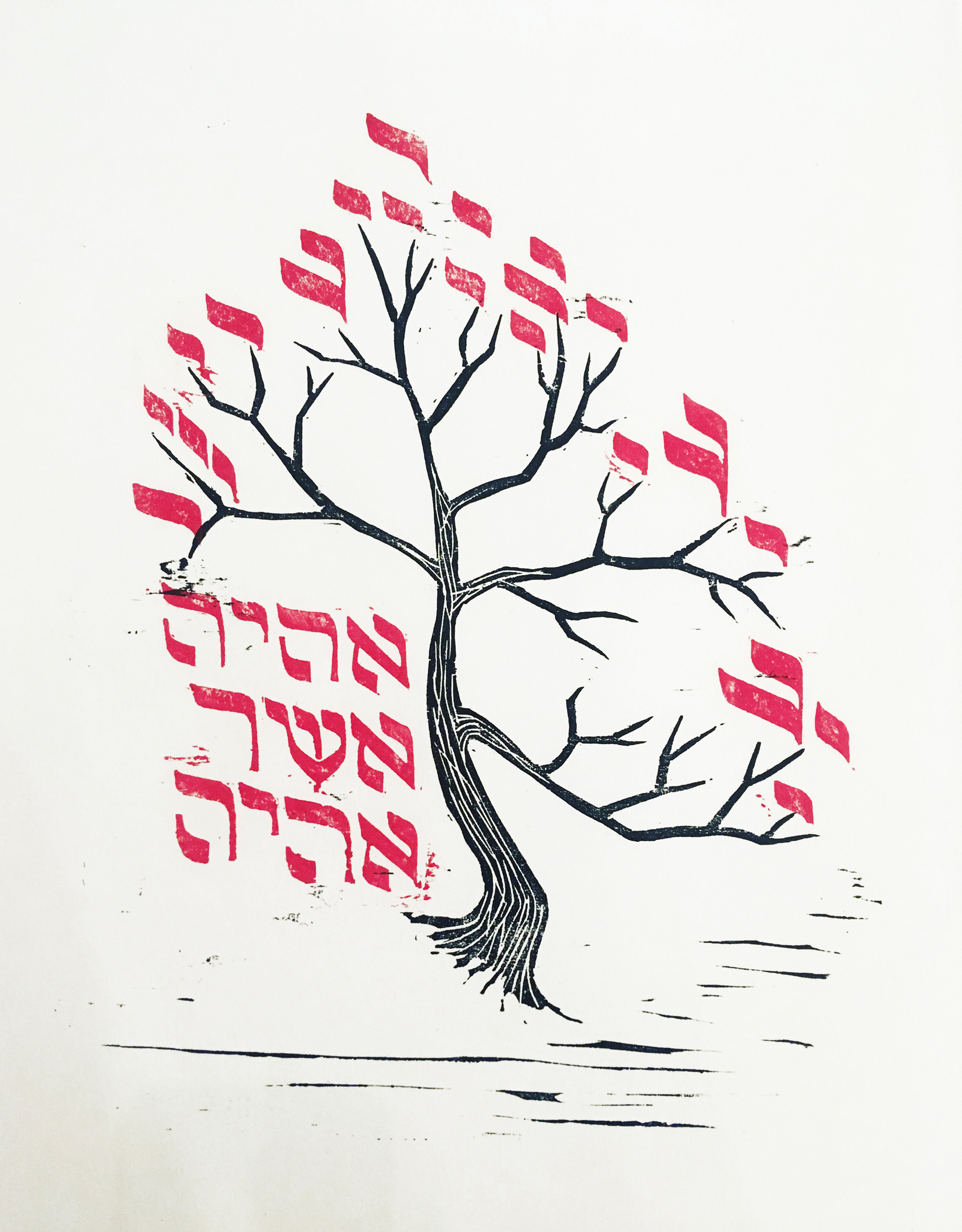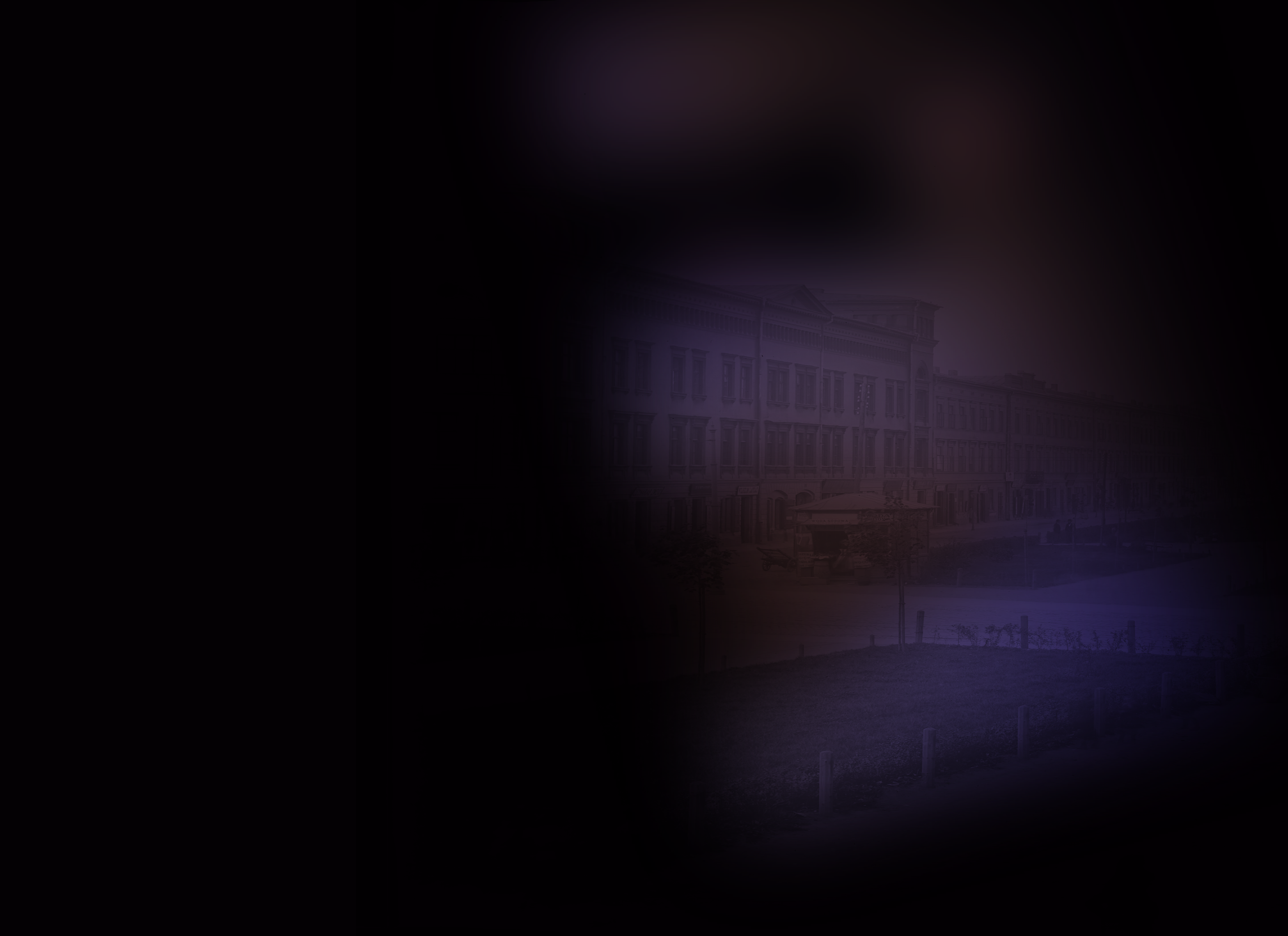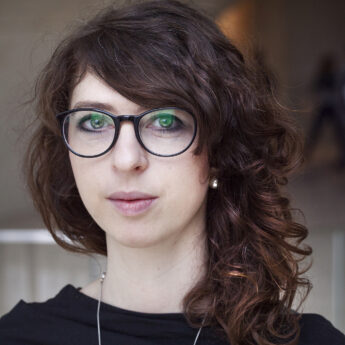
Helena Czernek
Short bio
Helena Czernek was born in 1985 in Warsaw. She graduated from the Faculty of Design at the Academy of Fine Arts in Warsaw. She also studied at the Bezalel Academy of Arts and Design in Jerusalem and Hebrew studies at the University of Warsaw. Since 2014, together with Aleksander Prugar, she has been running the Mi Polin design studio dealing with modern design focused on Jewish themes. As part of Mi Polin, she runs the “Mezuzah from this house” project, which involves finding traces of mezuzahs in pre-war Jewish homes. They cast these traces in bronze to create new mezuzahs, giving a second life to those that have not existed for years. One of the mezuzahs designed by Mi Polin is in the collection of the Jewish Museum in New York.
At the same time, she works on Japanese mokuhanga woodcuts. She often uses Jewish motifs and Hebrew calligraphy. She runs his woodcut studio in Warsaw’s Praga district, where she will soon also conduct Japanese woodcut workshops.
She is the author of the design of paper daffodils for the Polin Museum to celebrate the anniversary of the outbreak of the Warsaw Ghetto Uprising. Together with Klara Jankiewicz, she designed pedestrian crossings in the shape of a piano keyboard for the Chopin Year 2010, which were implemented in Warsaw at Emilii Plater Street, as well as several European cities. In 2018, she participated in the Asylum Arts International Jewish Artist Retreat in Garrison near New York. In January 2019, she took part in the calligraphic performance Silent Writing, led by the world-famous calligrapher Brody Neuenschwander, during which she wrote calligraphy in Hebrew. She conducts educational and artistic workshops.
As a Native Varsovian, you often work in the capital’s space – for example, in the “Zebra crossing – piano-key” project (2010) or the series “The place, where I walk.” Could you tell us more about your artistic and personal relationship with the city? What role do the layers of Polish-Jewish memory play in it?
My roots are much more complex, and my identity is not straightforward. My grandfather and the Jewish part of the family come from Krakow, a city I have a strong affection for. My great-grandmother moved to Krakow from Lodz. My grandfather and his parents moved to Warsaw during the war because here, unlike in Krakow, they could be anonymous and effectively hide under changed names and false documents. My grandmother, with a heraldic lineage, is from Warsaw. My mom, after graduating studies, escaped to the Bieszczady mountains, where she met my father, also a refugee from the capital, although his roots trace back to a village in Podlasie. At some point, my parents returned to Mazovia but not to Warsaw. They settled in the countryside, an hour away. I was born in Warsaw, but until my studies, I lived in the countryside.
So, I feel like a total mix on many levels: rural-urban, Polish-Jewish, peasant-noble… It’s challenging to complicate it further. This significantly influences my creativity and inspiration.
My artistic relationship with Warsaw doesn’t stem from local, innate patriotism but rather because I now live here and can closely observe the city, which has become my home. That I know and understand. But what has always attracted me on my artistic journey are collisions, contrasts, and surprising combinations. I draw inspiration from rural and urban atmospheres simultaneously, bridging the Middle East with a European way of life. In recent years, I’ve been fascinated by Japanese woodcuts, incorporating Hebrew calligraphy into them, narrating about Judaism through Japanese techniques and aesthetics. This multiplicity gives me an infinite number of possibilities, combinations, and inspirations.
The photographic project “The place, where I walk” originated mainly from my curiosity and the need for exploration, especially in damaged, abandoned places with diverse histories. I love the sight of peeling layers of paint because each layer represents a different story and different inhabitants. Despite being covered by subsequent generations, they still emerge. I conduct such searches wherever I am. While living in Jerusalem, I spent long hours on solitary walks with a camera to delve into less touristy places. In my village, I created a photographic series “To se ne vrati” about the passing of things, houses, and agricultural equipment. For ten years, I documented the decay of a house after a fire, observing extraordinary changes: how its furnishings gradually deteriorated until the complete demolition of the building. Similarly, I began discovering Warsaw when I moved here for studies. I spent a lot of time walking in Praga, exploring railway ruins near the Central Station, the ruins of a theater warehouse on Oboźna Street, etc. Later projects, such as “Zebra crossing – piano-key” for the Chopin Year, painted on Emilii Plater Street, or even daffodils, emerged because I was here. Our connection was built on this presence, and from it, various projects and initiatives could arise. It would be much more challenging for me to design now, for example, for Poznan or Gdansk, as I don’t know these places well enough to see beyond their superficial features. Being here, in Warsaw, primarily gave me time to examine daily life and the city’s past and translate my observations into design and artistic activities.
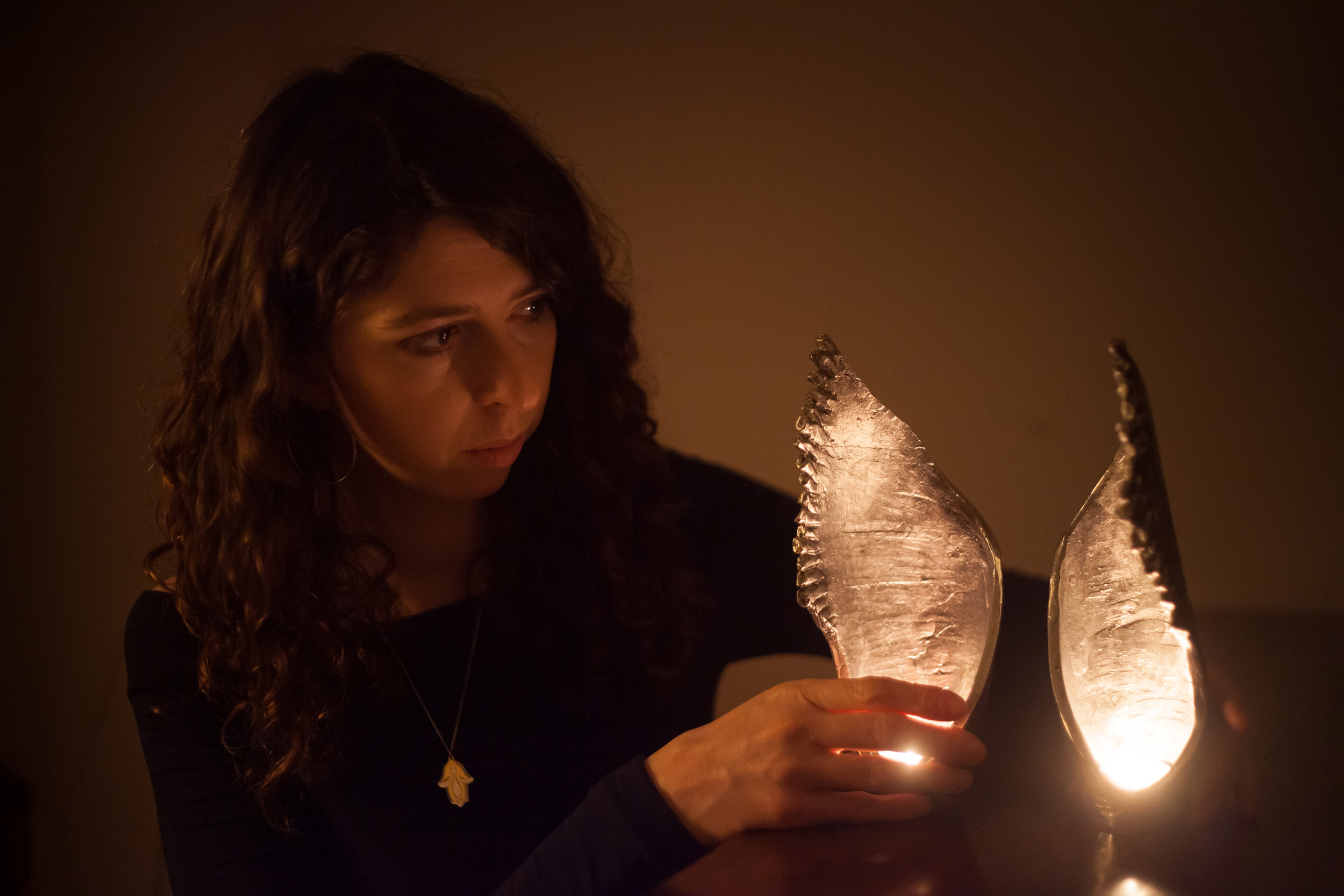
While studying at the Bezalel Academy of Arts and Design in Jerusalem, you created the “Broken Dishes” collection. How did the idea of using everyday objects like plates or bowls for reflections on the past and present – and their connections – come about? Especially broken ones?
I opted for studies in Israel after participating in the Taglit Birthright Israel program, which lasted about ten days. It was too short for me. I wanted to calmly observe, discover, and photograph corners that were not taken to us or spend a bit longer in different places. I was much more interested in Jerusalem than Tel Aviv, due to the richness and proximity of very different cultures and tensions between them. I wanted to feel that, and experience adrenaline, not just beaches and the sea. During my year there, I observed daily life, which suggested associations with Polish or European everyday life. The “Broken Dishes” project was a response to the differences in eating habits in the Middle East and Europe, where we use cutlery for everything, and there are suitable dishes for everything. I wanted to meet these two worlds and create dishes for what is often eaten in Israel by hand. But because that world is not easy, with the constant threat of war, especially for an outsider not accustomed to it, it’s a challenging aspect to familiarize oneself with. So, I used broken dishes for the project. I transformed them by combining ceramic fragments differently. This resulted in dignified stands for pita, a bowl for Bamba snacks, and dishes for falafel, or hummus – all with sharp, unpolished edges. They had both beauty and sharpness, creating a kind of unease. Using old, broken dishes fits well with my fascination with the passing of things. Here, I managed to stop this passing, even reverse it, and create new life and significance for these objects.

You are the author of several projects directly related to Jewish culture and history in Poland. The first, “Mi Polin,” combines Jewish tradition with modern design. Could you tell us more about the concept behind it?
MI POLIN came about quite naturally. It became a reflection of myself and my fascinations, as well as the perfect way to combine my passion for design and Judaism. It all came together. It started back in college when I enrolled in a ceramics workshop. We didn’t have specific topics; we had to come up with our own. My mom suggested that I make a Hanukkah menorah because we didn’t have a proper one at home. So, I created the Menokija, which combines three Jewish candleholders: Shabbat, menorah, and, when combined, a Hanukkah menorah. Soon, I realized that there were more people like us in Poland who didn’t have a good Hanukkah menorah. I started pursuing this idea. Shortly after, Aleksander Prugar joined me, and together, we turned this idea into the brand MI POLIN, putting everything on the line. The name MI POLIN, meaning “from Poland” in Hebrew, is crucial to understanding the entire concept. Before the war, there were many Judaica manufacturers in Poland, but after the war and the communist era, absolutely nothing remained. And now, here we are in Warsaw, Poland, creating Judaica that fits the modern times. We are bridging the decades of emptiness to recreate that old world but in a new edition. We want local Jews to use ritual objects in their homes that come from here, created by someone from their community. This is ours, and we can create what we need. There is room for creativity, so as a community, we are getting stronger. This was what we wanted to convey to the local community. For foreign audiences, the name MI POLIN also carried a message: ten years ago, many foreign Jews didn’t know that Jewish life still thrived here. So, with the name alone, we wanted to emphasize that we are here and will continue to be. It surprised many.
Designing Judaica has become my main occupation, allowing me to learn about Judaism and share my knowledge through the objects we create. This fascinated me a lot! Over the years, we have created various items, each with its own story. On the one hand, we refer to hiddur mitzvah, which says that ritual objects must be beautiful, but on the other hand, that wasn’t enough for us. I always needed some second layer, playing with symbolism, transformations, and clashes of meanings. And that’s what MI POLIN products are all about. MI POLIN has become an extraordinary adventure that took us much further than we imagined. It opened up the world to us through foreign clients, exhibitions, and travels in search of traces of mezuzahs.

The second project, “Daffodils,” has become a permanent part of the annual commemorations of the Warsaw Ghetto Uprising. Recently, yellow paper daffodils are distributed not only in the streets of Warsaw but also in Łódź, Krakow, Białystok, Lublin, and Wrocław. The initiative is gaining wider recognition, with well-known figures from the cultural world participating each year. How does it feel for you as an artist and a citizen to observe this kind of process?
The “Daffodils,” campaign and the commission for this project appeared at the very beginning of my professional journey. I had just graduated, MI POLIN didn’t exist yet, and I didn’t have much experience. Yet, looking back, I am still pleased and proud of this project. At that time, I had no idea of the extent and significance this campaign and symbol would gain. Every year, the campaign grows and expands. I must admit that, over time, I feel a profound sense of pride and emotion seeing people in April with a daffodil pinned to them. That I could contribute my part to something so enormous and important. The “Daffodils” campaign has led to a significant increase in awareness of the Warsaw Ghetto Uprising, as shown by research. It provides immense satisfaction.
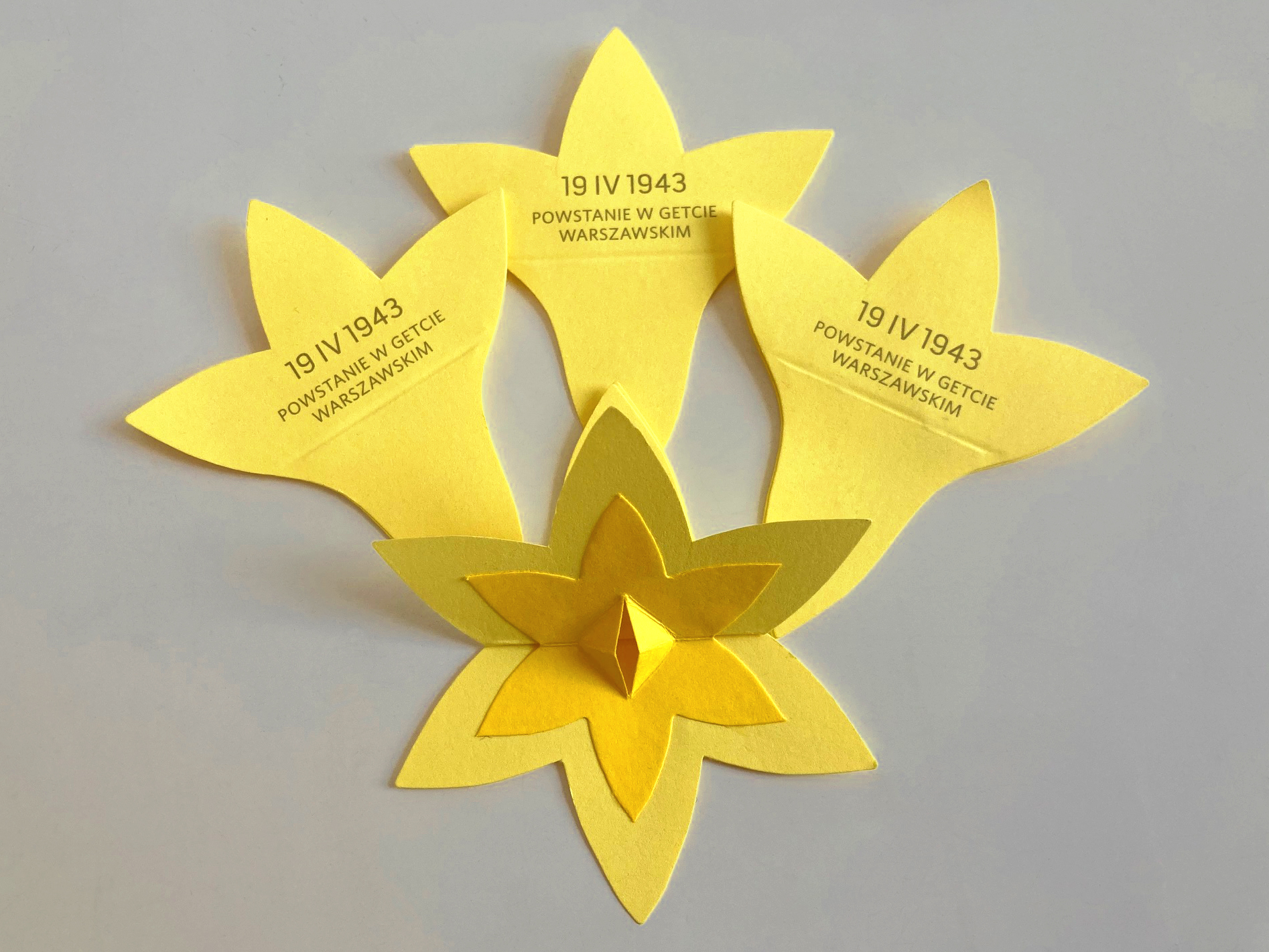
Your next project, “Mezuza z tego domu” (Mezuzah from this house), seems like a natural continuation of the previous two. Is it true that it was inspired by traces of a mezuzah found in Krakow, at Mostowa Street?
“Mezuzah from this house” is a project that has been going on for 11 years, temporally preceding the establishment of MI POLIN. One could even say that we created MI POLIN as a result of this project. Indeed, the beginnings of working with traces of mezuzahs are connected to Krakow. While being there for the first time, I noticed empty traces on door frames. In Warsaw, it is much more challenging to notice them due to the scale of the city’s destruction during World War II. This emptiness deeply moved me. We wondered, Alexander and I, how to turn this disappearance, this significant absence, into presence, into something tangible. We didn’t want to settle for just photographic documentation. So, we started making imprints of these remnants of old mezuzahs – niches, grooves, shapes in paint, nails – and casting them in bronze. This way, a collection of new mezuzahs was created, growing from that emptiness but coming to life again. After inserting a parchment scroll, they can be used again, attached to the door frames of today’s Jewish homes, and touched by new owners. This touch aims to revive what is lost, and destroyed. Reaching beyond the Holocaust to that ancient world, the world of living people. By conducting historical research, we find names and stories of often ordinary, sometimes forgotten people.
Starting this project, we set the goal of creating seven mezuzahs. We consider this number highly symbolic in Jewish tradition. We wanted to showcase the result at an exhibition and leave it at that. However, it turned out that descendants of Polish Jews living abroad became interested in our mezuzahs. We began receiving requests to find traces of mezuzahs in their family homes, towns, and cities to create bronze mezuzahs for them, allowing them to live again. They turned out to be significant links for these people to their roots and family history, sometimes the only memento of that ancient world. In this way, instead of seven, we have made around 170 mezuzahs so far in nearly a hundred locations in Poland and abroad. The “Mezuza z tego domu” project has taken us to Ukraine, Belarus, Romania, Hungary, and even Morocco! Most of the ordered mezuzahs are sent to the USA, although we also receive orders from Argentina, South Africa, and distant Asia. This shows how the fate of Jews from different, often small towns unfolded. Each mezuzah is a story of them and their ancestors, homes and their current residents, and also our story. It is extraordinary intertwining and balancing on the border of time and space, traveling into someone else’s past.
This project is also a race against time because traces of mezuzahs are becoming increasingly scarce – due to ongoing renovations or the demolition of tenements, mezuzah traces disappear irretrievably. That’s why we are here, participating in this race for 11 years, to try to save as much as possible.
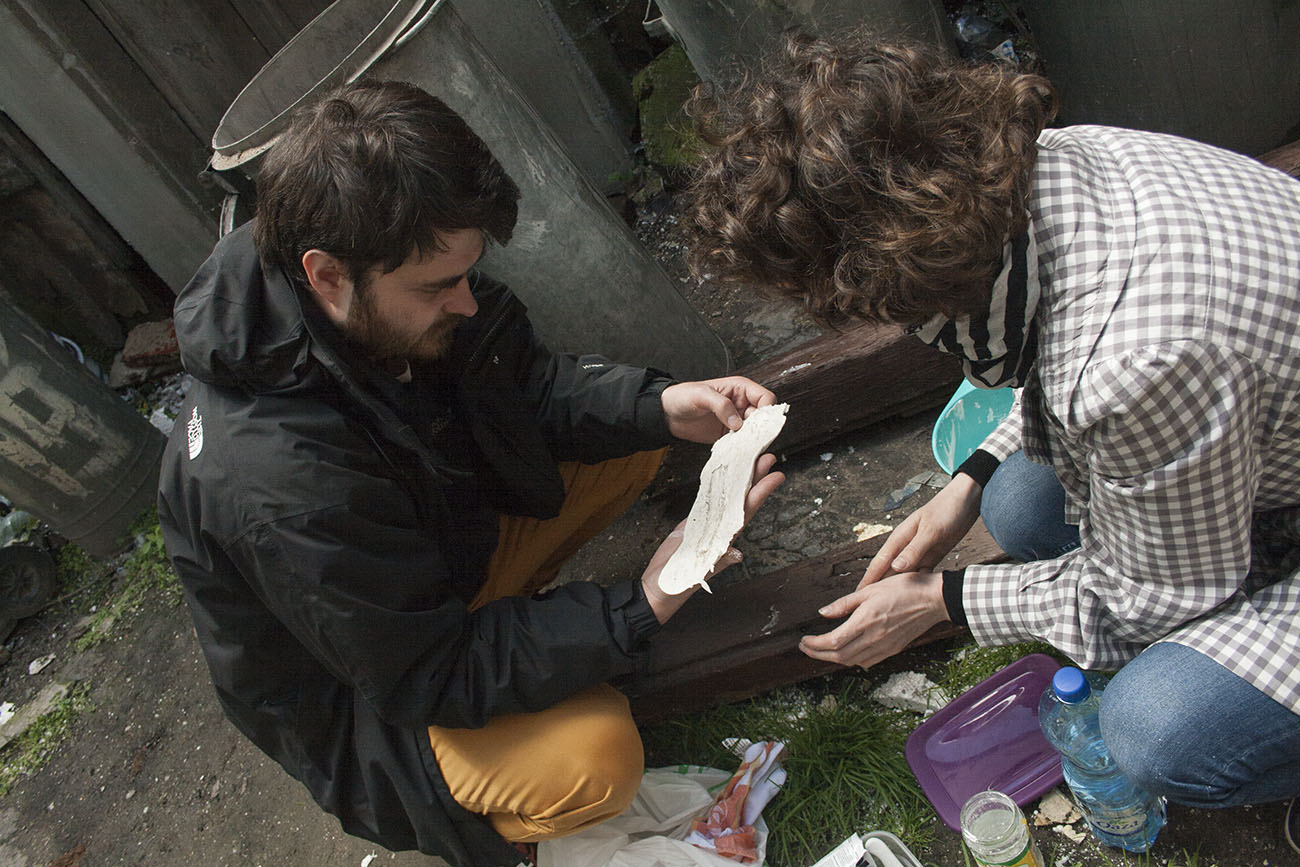
And what are you currently working on?
Lately, my creative focus has shifted somewhat towards woodcuts and the Japanese woodblock printing technique, mokuhanga, to which I dedicate more and more time. In my studio in Warsaw’s Praga district, using chisels to carve matrices in wood, colored pigments, and special brushes, I create prints inspired, as in my entire creative work, by various areas. Many of these works contain Hebrew quotes from Psalms, the Torah, or other Jewish sources. I calligraph them, then carve them into wooden boards, and finally, print the resulting matrices on paper, creating colorful prints. Some of my works are clear references to Japanese aesthetics and symbolism. The latest series is inspired by stones, rocks, celestial bodies, and the cosmos – the early days of the creation of the world, before any life appeared on it. I experiment with colors, so each piece is different and unique, and reaching into such diverse sources gives me a broad perspective and distance. Soon, I will also start a series of workshops on woodcut techniques to share this extraordinary and unpopular technique in Poland with others.
